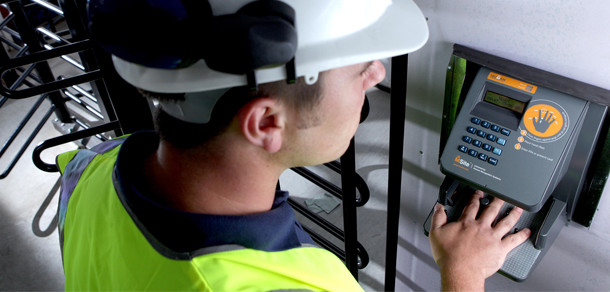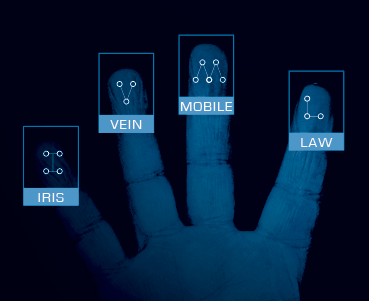Biometrics securing construction sites
Tech saves money, increases security
06 October, 2015
category: Biometrics, Corporate
Tighter controls in Europe
The demand for biometrics to secure construction sites is taking off in Europe, and in the United Kingdom in particular. HID Global provides biometric access control systems for construction companies throughout the U.K., Europe and the Middle East.
“We don’t see as much of this yet in the U.S., but the U.K. has taken the lead enforcing a lot of these regulations,” says Bill Spence, vice president of sales for North America, Europe and Australia for HID Global.
Europe has a much tighter regulatory framework governing how its construction workers are controlled. It’s illegal for companies to employ workers if they can’t prove where those workers are from, he explains.
Aurora, a U.K.-based biometric research and development company, has deployed its facial recognition software for the construction of some of London’s largest high-rise buildings, including The Shard, a now iconic 87-story skyscraper that opened in 2013.
Aurora’s system uses infrared instead of visible light to avoid lighting challenges at different times of day and in unique environments. The system can work even in complete darkness, explains Gary James, head of sales and customer relations for Aurora.
“As long as you have the same face on today as you had yesterday, you’re going to get through very quickly,” says James.
U.K.-based Aurora uses facial recognition to secure some of London’s largest high-rise construction sites
One of the big advantages of facial recognition, James says, is that there is no contact necessary, which is important for construction workers who wear and carry a lot of safety equipment. “It slows the whole process if they have to take some element of that off before they go through,” he adds. Additionally, stopping to set down tools and materials in order to retrieve and present an ID card hampers productivity.
The Aurora unit consists of a box on the wall with a screen at the bottom that captures the worker’s image through an infrared camera. The unit can also be mounted inside a secure turnstile that won’t open without the correct verification. For smaller job sites, a cloud-based option works with smartphones and tablets.
James says the most powerful aspect of facial recognition is that the system takes pictures of every event. So in case of a situation, such as a terrorist attack where suspects would need to be identified, there are pictures available of everyone who has ever entered the site.
“If you think about the other kinds of biometrics, we cannot run around the site with a photograph of somebody’s fingerprint or a scan of an eyeball and try to work out who that person is,” he says.
Other tech companies have discovered their own workarounds to the challenges that come with identifying workers on a construction site. HID Global developed its Lumidigm fingerprint sensor to overcome the fingerprint capture problems found with conventional imaging systems.
The Lumidigm sensor captures images even when it’s difficult to distinguish fingerprint images in harsh environments. “From the very beginning, we designed the technology to be able to work in these difficult environments,” says Spence.
Ievo, a U.K. biometric manufacturer, develops fingerprint readers for a range of applications, including construction sites. Ievo biometric access control readers use Lumidigm imaging technology, and its fingerprint readers have been used on Crossrail railway construction sites in the U.K.
“Adopting a biometric technology is the first line of defense, not just for the security aspects but also for health and safety implications,” says Shaun Oakes, CEO and owner of Ievo.
Contractors cut labor expenses
The demand for biometric access control on job sites is growing as companies realize the money these systems can save in wage fraud.
It’s accurate and simply a more efficient way of doing things, James says. “Lots of people still keep the old fashioned time sheets, and this obviously eradicates all of that administration,” he adds.
Through its construction site access control system, New York-based safety and security provider Allied Risk Management was able to recover nearly $1 million for one of its clients, Tishman Construction Corp. of Boston, says Kerry Madden, administrator for Allied Risk Management
The construction company was being billed by multiple subcontractors at the site but had no way of keeping track of who was actually there. Allied Risk Management set up a system that ensured everyone entering the site swiped an access control card with the worker’s picture and employer’s name. At the end of the day, the contractor had work force records to match against the subcontractors’ invoices.
Allied Risk Management’s access control services took off following its work for Tishman.
Through its issuance partner, IDSecurityOnline.com, the company provides proximity cards to workers at construction sites throughout New York City. To ensure that production and personalization of worker badges does not impede progress on site, pre-programmed cards are sent from IDSecurityOnline to Allied for centralized personalization and distribution to the field in just 24 to 48 hours.
Madden says construction companies are starting to recognize the need for securing their sites. “Unfortunately, theft and disgruntled workers are always going to be around,” she says. But, she explains, sound access control policies and systems can alleviate the risk.
Chelmsford, Massachusetts-based Kronos Inc. has also found a niche helping U.S. construction companies reduce their labor costs by securing site access.
Kronos uses touch ID technology to provide automated workforce management for Crossland Construction Company Inc., which had been manually tracking employee time. The challenge for Crossland was that it sometimes forgot to include the time of employees on a job, or identify those who worked on multiple projects.
Buddy punching was another issue for Kronos’ clients. “With biometric technology, you can’t do that anymore – it’s a significant cost savings for an organization,” says Kylene Zenk-Batsford, senior manager of manufacturing for the construction practice of Kronos Inc.
Crossland placed Kronos biometric data collection terminals at each of its construction sites, and by paying employees for only their time worked, saved $850,000 on labor in its first year alone, explains Zenk-Batsford.
Construction companies don’t often think about the value of site security until there’s an instance of theft or vandalism
Madden says construction companies don’t often think about the value of site security until there’s an instance of theft or vandalism. If a subcontractor is fired from a project, disgruntled employees might go back and rip out work or steal equipment. But when construction companies set up access controls, they help eliminate these risks, she says.
“It’s a common thought that things are going so well that a company doesn’t need security,” says Madden. “But most of the time, things are going well because there is security there.”




